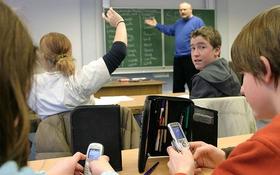Top Rankings
Inola School District ranks among the top 20% of public school district in Oklahoma for:
Category
Attribute
Diversity
Most diverse schools (Top 1%)
Community Size
Largest student body (number of students) (Top 1%)
For the 2025 school year, there are 3 public schools serving 1,379 students in Inola School District. This district's average testing ranking is 5/10, which is in the bottom 50% of public schools in Oklahoma.
Public Schools in Inola School District have an average math proficiency score of 23% (versus the Oklahoma public school average of 25%), and reading proficiency score of 21% (versus the 27% statewide average).
Minority enrollment is 52% of the student body (majority American Indian), which is less than the Oklahoma public school average of 56% (majority Hispanic and American Indian).
Overview
This School District
This State (OK)
# Schools
3 Schools
1,794 Schools
# Students
1,379 Students
721,016 Students
# Teachers
85 Teachers
43,565 Teachers
Student : Teacher Ratio
16:1
16:1
District Rank
Inola School District, which is ranked within the bottom 50% of all 533 school districts in Oklahoma (based off of combined math and reading proficiency testing data) for the 2021-2022 school year.
The school district's graduation rate of 85-89% has stayed relatively flat over five school years.
Overall District Rank
#322 out of 538 school districts
(Bottom 50%)
(Bottom 50%)
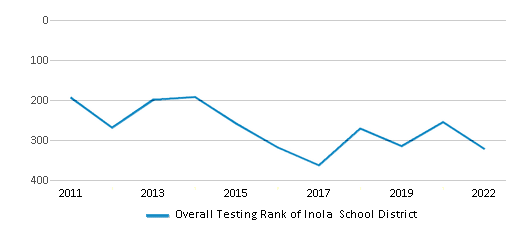
Math Test Scores (% Proficient)
23%
25%
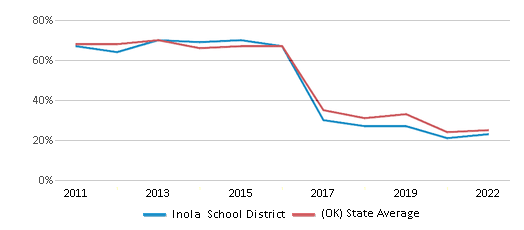
Reading/Language Arts Test Scores (% Proficient)
21%
27%
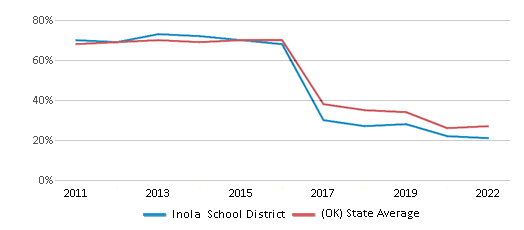
Science Test Scores (% Proficient)
29%
31%
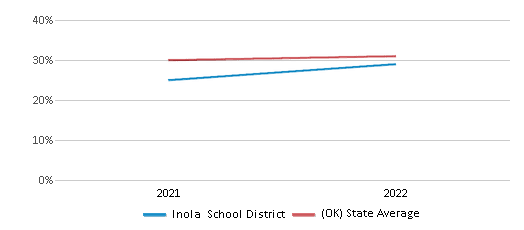
Graduation Rate
(20-21)85-89%
78%
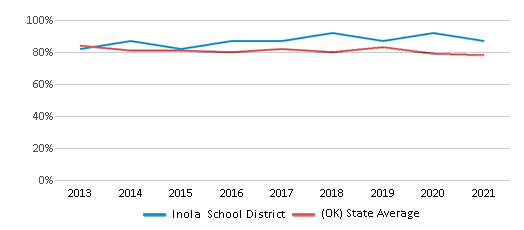
Students by Ethnicity:
Diversity Score
0.69
0.73
# American Indian Students
338 Students
78,002 Students
% American Indian Students
24%
11%
# Asian Students
63 Students
16,351 Students
% Asian Students
5%
2%
# Hispanic Students
89 Students
146,732 Students
% Hispanic Students
6%
20%
# Black Students
8 Students
57,572 Students
% Black Students
1%
8%
# White Students
659 Students
320,142 Students
% White Students
48%
44%
# Hawaiian Students
n/a
3,156 Students
% Hawaiian Students
n/a
1%
# Two or more races Students
218 Students
98,894 Students
% of Two or more races Students
16%
14%
Students by Grade:
# Students in PK Grade:
63
38,038
# Students in K Grade:
90
49,325
# Students in 1st Grade:
90
51,638
# Students in 2nd Grade:
93
51,822
# Students in 3rd Grade:
108
51,866
# Students in 4th Grade:
114
51,270
# Students in 5th Grade:
104
51,780
# Students in 6th Grade:
87
52,317
# Students in 7th Grade:
84
53,730
# Students in 8th Grade:
104
55,226
# Students in 9th Grade:
111
57,588
# Students in 10th Grade:
111
55,440
# Students in 11th Grade:
98
52,900
# Students in 12th Grade:
122
48,076
# Ungraded Students:
-
-
District Revenue and Spending
The revenue/student of $8,611 in this school district is less than the state median of $10,983. The school district revenue/student has declined by 13% over four school years.
The school district's spending/student of $8,247 is less than the state median of $10,957. The school district spending/student has declined by 13% over four school years.
Total Revenue
$12 MM
$7,919 MM
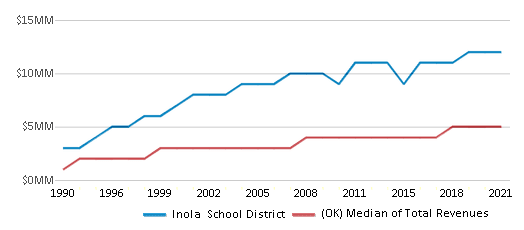
Spending
$11 MM
$7,900 MM
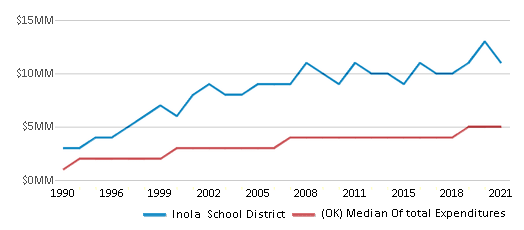
Revenue / Student
$8,611
$10,983
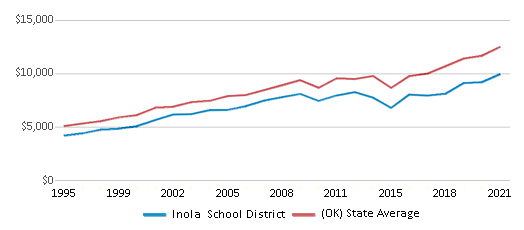
Spending / Student
$8,247
$10,957
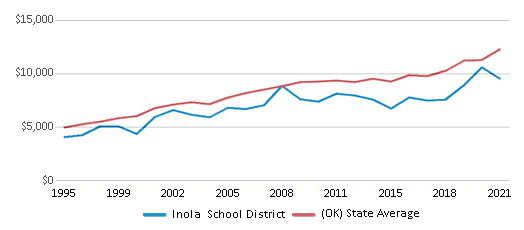
Best Inola School District Public Schools (2025)
School
(Math and Reading Proficiency)
(Math and Reading Proficiency)
Location
Grades
Students
Rank: #11.
Inola High School
(Math: 15-19% | Reading: 35-39%)
Rank:
Rank:
6/
Top 50%10
801 E Commerical Street
Inola, OK 74036
(918) 543-0400
Inola, OK 74036
(918) 543-0400
Grades: 9-12
| 442 students
Rank: #22.
Inola Elementary School
(Math: 33% | Reading: 19%)
Rank:
Rank:
5/
Bottom 50%10
450 Nw B Street
Inola, OK 74036
(918) 543-0200
Inola, OK 74036
(918) 543-0200
Grades: PK-4
| 558 students
Rank: #33.
Inola Middle School
(Math: 16% | Reading: 18%)
Rank:
Rank:
3/
Bottom 50%10
803 E Commercial Street
Inola, OK 74036
(918) 543-0300
Inola, OK 74036
(918) 543-0300
Grades: 5-8
| 379 students
Frequently Asked Questions
How many schools belong to Inola School District?
Inola School District manages 3 public schools serving 1,379 students.
What is the rank of Inola School District?
Inola School District is ranked #319 out of 533 school districts in Oklahoma (bottom 50%) based off of combined math and reading proficiency testing data for the 2021-2022 school year. This district ranks in the top 20% of Oklahoma school districts for: Most diverse schools (Top 1%) and Largest student body (number of students) (Top 1%)
What is the racial composition of students in Inola School District?
48% of Inola School District students are White, 24% of students are American Indian, 16% of students are Two or more races, 6% of students are Hispanic, 5% of students are Asian, and 1% of students are Black.
What is the student/teacher ratio of Inola School District?
Inola School District has a student/teacher ratio of 16:1, which is lower than the Oklahoma state average of 17:1.
What is Inola School District's spending/student ratio?
The school district's spending/student of $8,247 is less than the state median of $10,957. The school district spending/student has declined by 13% over four school years.
Recent Articles

What Is A Charter School?
Explore the world of charter schools in this comprehensive guide. Learn about their history, how they operate, and the pros and cons of this educational innovation. Discover key facts about charter schools, including admission policies, demographics, and funding, as well as what to look for when considering a charter school for your child.

10 Reasons Why High School Sports Benefit Students
Discover the 10 compelling reasons why high school sports are beneficial for students. This comprehensive article explores how athletics enhance academic performance, foster personal growth, and develop crucial life skills. From improved fitness and time management to leadership development and community representation, learn why participating in high school sports can be a game-changer for students' overall success and well-being.

February 05, 2025
Understanding the U.S. Department of Education: Structure, Impact, and EvolutionWe explore how the Department of Education shapes American education, from its cabinet-level leadership to its impact on millions of students, written for general audiences seeking clarity on this vital institution.


